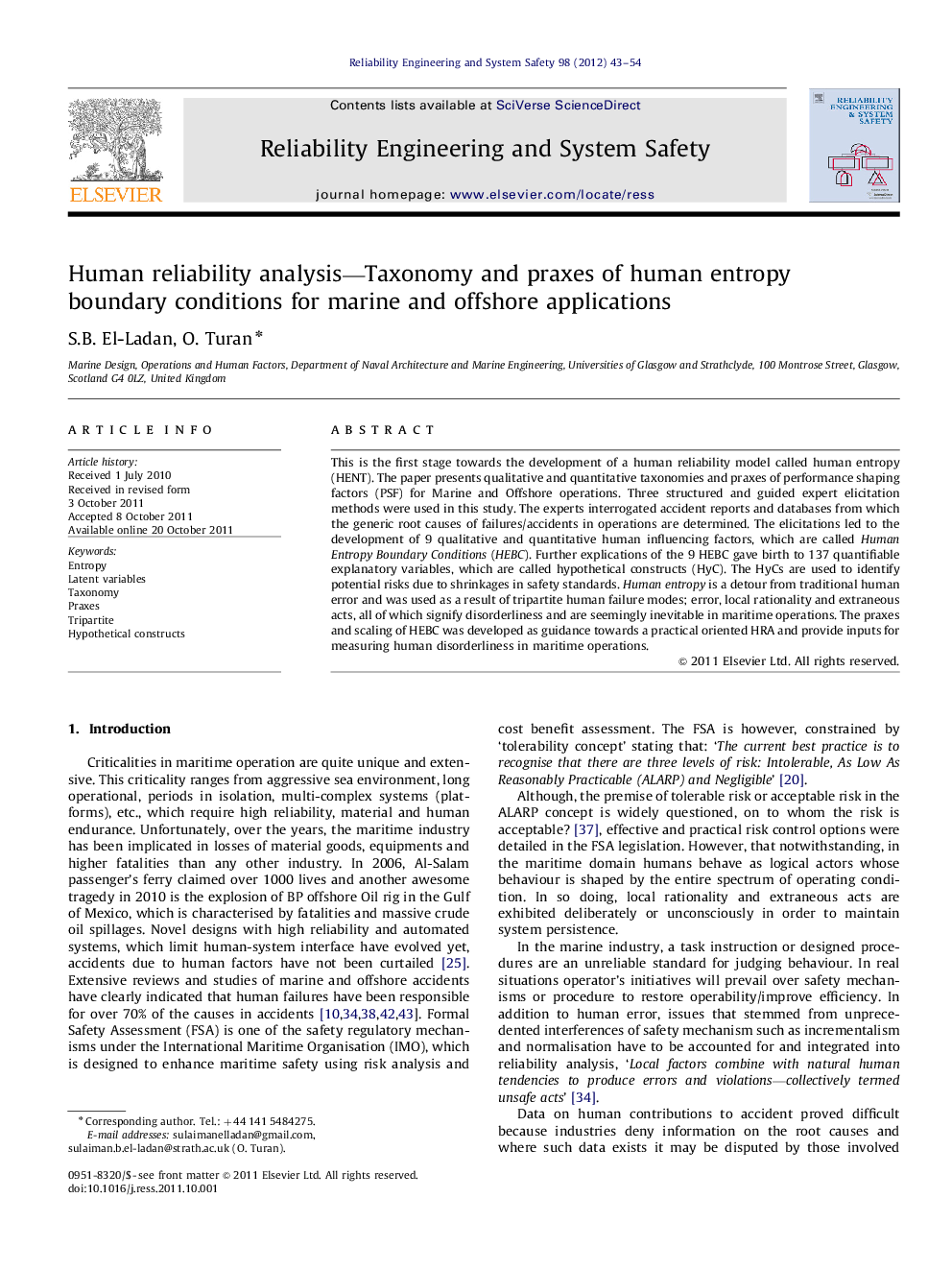| Article ID | Journal | Published Year | Pages | File Type |
|---|---|---|---|---|
| 803284 | Reliability Engineering & System Safety | 2012 | 12 Pages |
This is the first stage towards the development of a human reliability model called human entropy (HENT). The paper presents qualitative and quantitative taxonomies and praxes of performance shaping factors (PSF) for Marine and Offshore operations. Three structured and guided expert elicitation methods were used in this study. The experts interrogated accident reports and databases from which the generic root causes of failures/accidents in operations are determined. The elicitations led to the development of 9 qualitative and quantitative human influencing factors, which are called Human Entropy Boundary Conditions (HEBC). Further explications of the 9 HEBC gave birth to 137 quantifiable explanatory variables, which are called hypothetical constructs (HyC). The HyCs are used to identify potential risks due to shrinkages in safety standards. Human entropy is a detour from traditional human error and was used as a result of tripartite human failure modes; error, local rationality and extraneous acts, all of which signify disorderliness and are seemingly inevitable in maritime operations. The praxes and scaling of HEBC was developed as guidance towards a practical oriented HRA and provide inputs for measuring human disorderliness in maritime operations.
